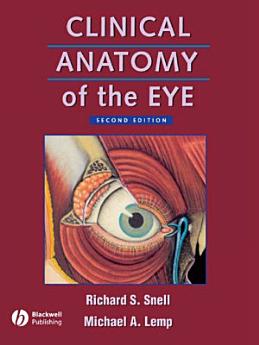Clinical Anatomy of the Eye: Edition 2
Apr 2013 · John Wiley & Sons
5.0star
2 reviewsreport
Ebook
432
Pages
reportRatings and reviews aren’t verified Learn More
About this ebook
Clinical Anatomy of the Eye has proved to be a very popular textbook for ophthalmologists and optometrists in training all over the world. The objective of the book is to provide the reader with the basic knowledge of anatomy necessary to practice ophthalmology. It is recognised that this medical speciality requires a detailed knowledge of the eyeball and the surrounding structures. The specialist's knowledge should include not only gross anatomic features and their development, but also the microscopic anatomy of the eyeball and the ocular appendages. The nerve and blood supply to the orbit, the autonomic innervation of the orbital structures, the visual pathway, and associated visual reflexes should receive great emphasis. The practical application of anatomic facts to ophthalmology has been emphasised throughout this book in the form of Clinical Notes in each chapter. Clinical problems requiring anatomic knowledge for their solution are presented at the end of each chapter. Illustrations are kept simple and overview drawings of the distribution of the cranial and autonomic nerves have been included.
Ratings and reviews
5.0
2 reviews
Mangal Paleya
- Flag inappropriate
May 14, 2019
please eye read more book please give me Sir
1 person found this review helpful
About the author
Richard S Snell, MD, PhD, Emeritus Professor of Anatomy, The George Washington School of Medicine and Health Sciences, Washington D.C.
Michael A Lemp, MD, Clinical Professor of Ophthalmology, Georgetown University Medical Center, President, University of Ophthalmic Consultants of Washington, Washington D.C.
Rate this ebook
Tell us what you think.
Reading information
Smartphones and tablets
Install the Google Play Books app for Android and iPad/iPhone. It syncs automatically with your account and allows you to read online or offline wherever you are.
Laptops and computers
You can listen to audiobooks purchased on Google Play using your computer's web browser.
eReaders and other devices
To read on e-ink devices like Kobo eReaders, you'll need to download a file and transfer it to your device. Follow the detailed Help Center instructions to transfer the files to supported eReaders.





